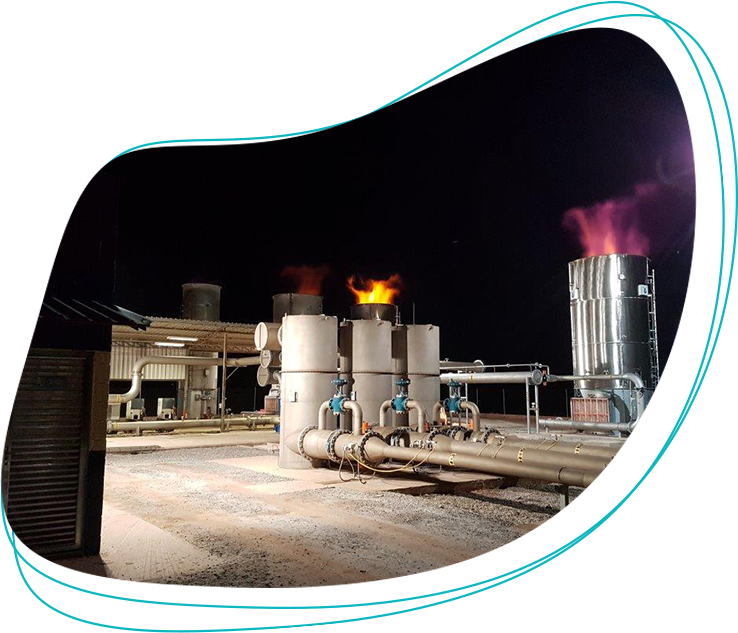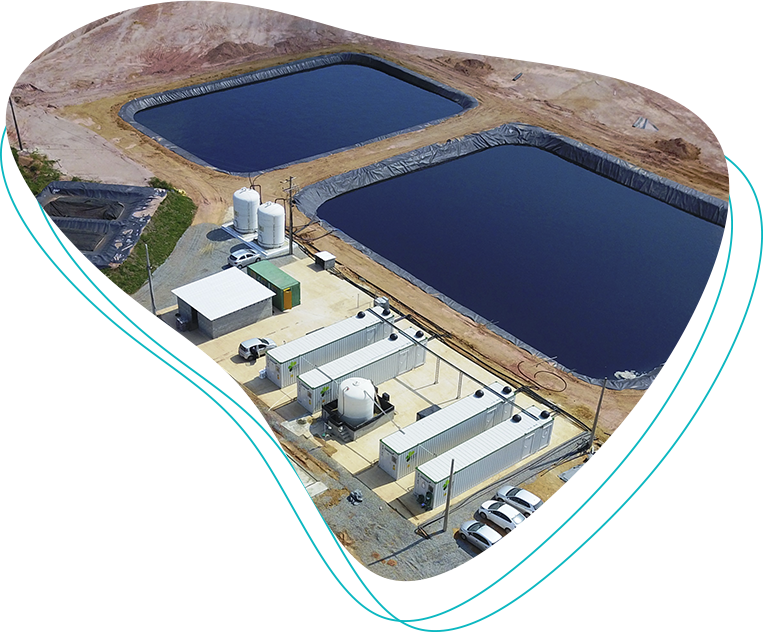From environmental liabilities to economic assets
Biogas production
from methane gas
Methane gas is one of the pollutants resulting from the decomposition of waste. In the old dumps and controlled landfills, the gas was released into the atmosphere, causing damage to health and the environment. With Ciclus' infrastructure, it is possible to treat this contaminant and transform it into biogas.
At the CTR, drains capture 450,000 cubic meters of methane gas daily. After being treated, the resulting biogas is sent to a third-party company that produces biofuels for vehicles
and industries.
Ao evitar o lançamento de mais de 50 mil toneladas de metano na atmosfera, há uma redução de emissão equivalente a 500 mil carros por ano, o que corresponde a quase 25% da frota do Rio de Janeiro.
The capture of gases that cause the greenhouse effect allows Ciclus to convert carbon credits. By the end of 2017, more than 2.5 million carbon credits had been delivered to the World Bank and Caixa Econômica Federal. Ciclus is also one of the winners of the Pilot Auction Facility 2020, which will allocate 465,000 carbon credits to the World Bank.
It is estimated that Ciclus will have generated more than 7.2 million carbon credits by 2025.


Production of demineralized
water from leachate
Every day, more than one million liters of leachate, a dark and polluting liquid generated from the decomposition of organic matter, are treated at a specialized treatment station.
Ciclus' CTR system drains leachate from the landfill. It transfers it to the Leachate Treatment Station, where it undergoes four stages of physical, chemical, and biological treatments, including the reverse osmosis technique, one of the most modern in the world.
Ciclus makes use of reverse osmosis equipment from the AST company. There are two independent and modular units of 500 cubic meters per day each, operating in a high-performance and efficient regimen without interruption. The process involves filters with special membranes that allow water only to pass through.
Ciclus' reverse osmosis plant
is one of the largest in the world for
leachate treatment.
The final result of the treatment is completely clean and demineralized water that meets the parameters established by environmental legislation. Because it is pure water, at the level of distilled water, it can have several uses, especially industrial ones (for cooling machines, for example).
There is also another treatment plant that operates at three treatment levels - physical-chemical, biological, and physical - and generates reuse water, used for irrigation of the CTR's own roads.


